Infinite grasslands created through a history of coexistence between people and nature
Our journey by van started in Fukuoka Prefecture and took us through Saga and Nagasaki prefectures to Kumamoto Prefecture. The volcanoes were pulsating, and the idyllic grasslands were pregnant with history—we had entered the Aso-Kuju National Park area. In contrast to the vast seascape of Nagasaki and the rough cliffs of Unzen, the view here consisted of infinite, dreamy grasslands. Our destination was Ubuyama Village, where Shunsuke I takes on the challenge of both breeding and raising the Akaushi, or Japanese Brown, a rare breed of Japanese cattle even in Japan, and promoting the quality of the beef.
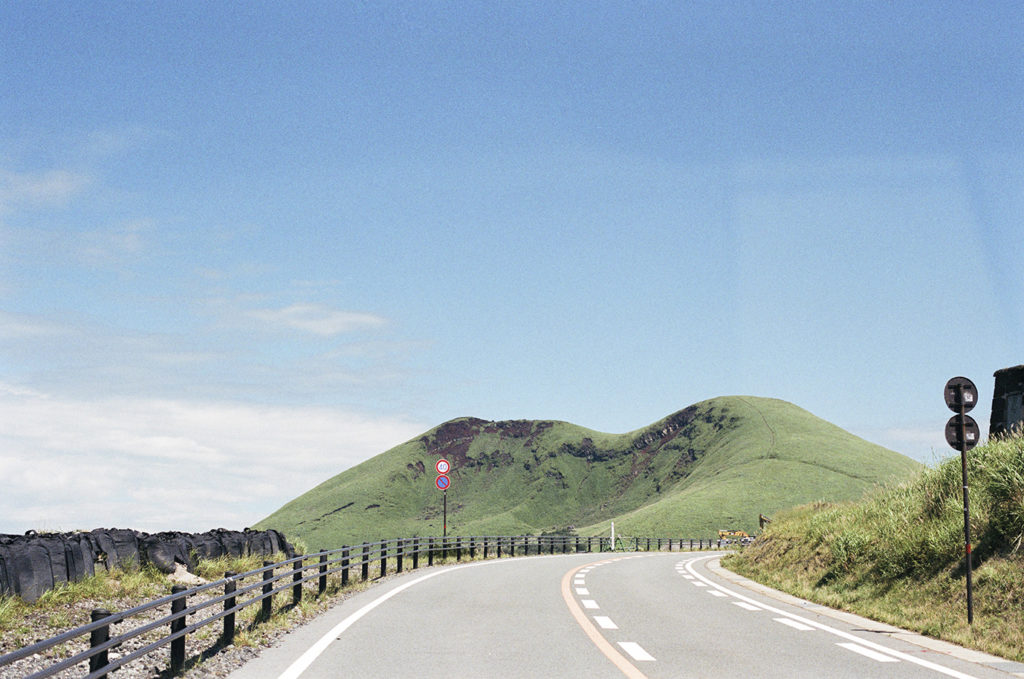
Although it was summer, a cool, refreshing breeze swept through the grasslands of Aso. Roaming about and grazing freely on the pastures, the cows were visibly happy. This is the largest area of natural grassland in Japan, and it’s the grand stage where Shunsuke raises his Akaushi cattle. Why did he opt for Akaushi over the more widely known Kuroge Washu (Japanese Black)?
“Because Aso was formed by volcanic events, the early residents went to a lot of trouble to create fields for growing rice and other crops. In a place like this, the first step was to neutralize the acidic soil. This required years of plowing the extensive natural grassland and fertilizing the soil with cow manure. So you see, cattle are ingrained in the Aso culture. Namely, Akaushi cattle are ideal for grazing and have been part of the Aso residents’ lives for a long time. So the reason we opt for Akaushi over other breeds is that we want to preserve the local culture and uphold the local tradition.”
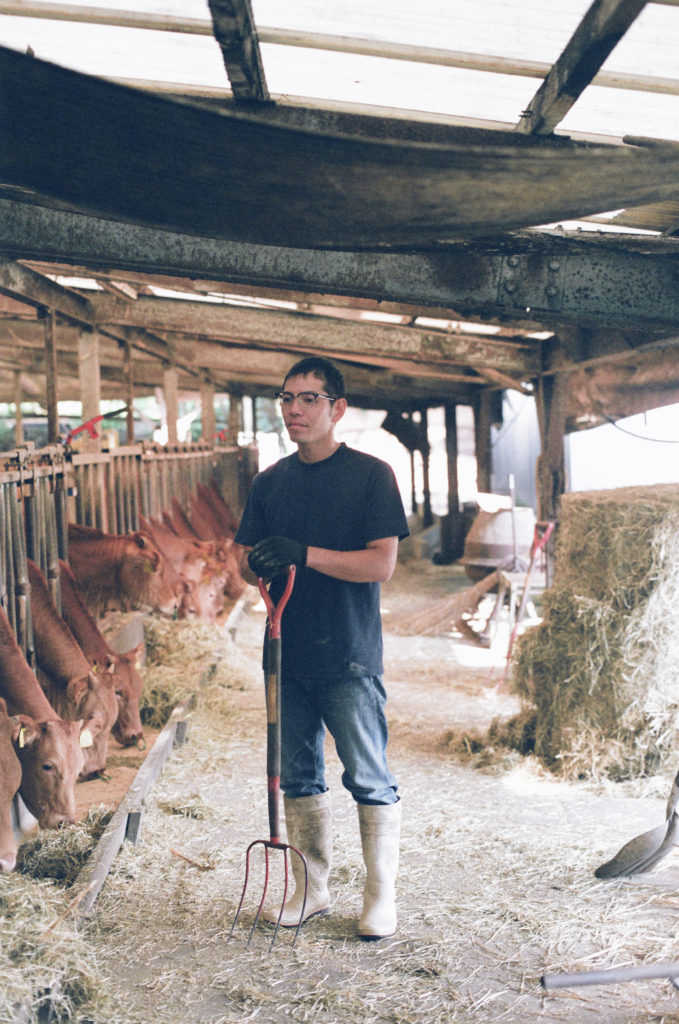
Feeding on the healthy grass and moving around freely in the endless pastures makes the Akaushi resistant to disease. In recent years, the lean red meat is winning a new following among health-conscious eaters.
“I’ve seen children who aren’t all that crazy about beef say they like Akaushi. Everything boils down to the grass you provide for the cattle. So many cow farms have trouble procuring pasture grass to feed their livestock. As you can see, we don’t have that problem. We’re lucky to have a rich source of water nearby, too—the Ikeyama Headspring, listed as one of Japan’s hundred best water sources. When you raise cattle in this environment using only traditional methods, you’re going to produce good beef.”
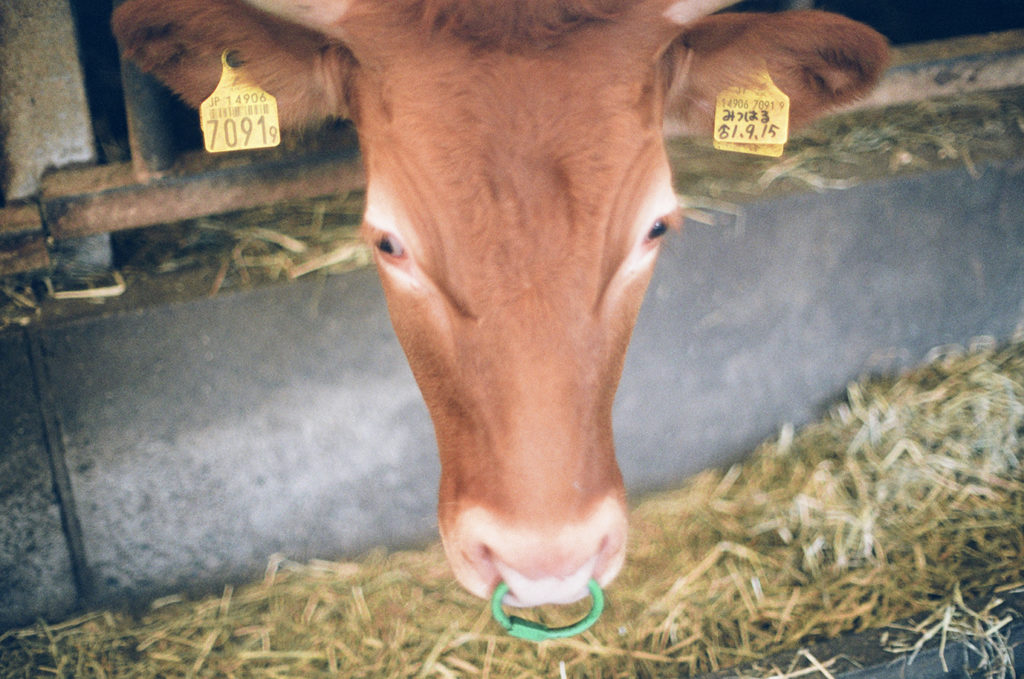
Shunsuke originally had a job in Kumamoto City. Day and night he was pressed with work, and at one point he felt lost in life. Ever since he took over his wife’s family business and came to spend time in the grasslands every day, he has regained energy in both body and mind. Carrying a precious package of Akaushi beef from Shunsuke, we said good-bye to the dreamy landscape and went on our way.
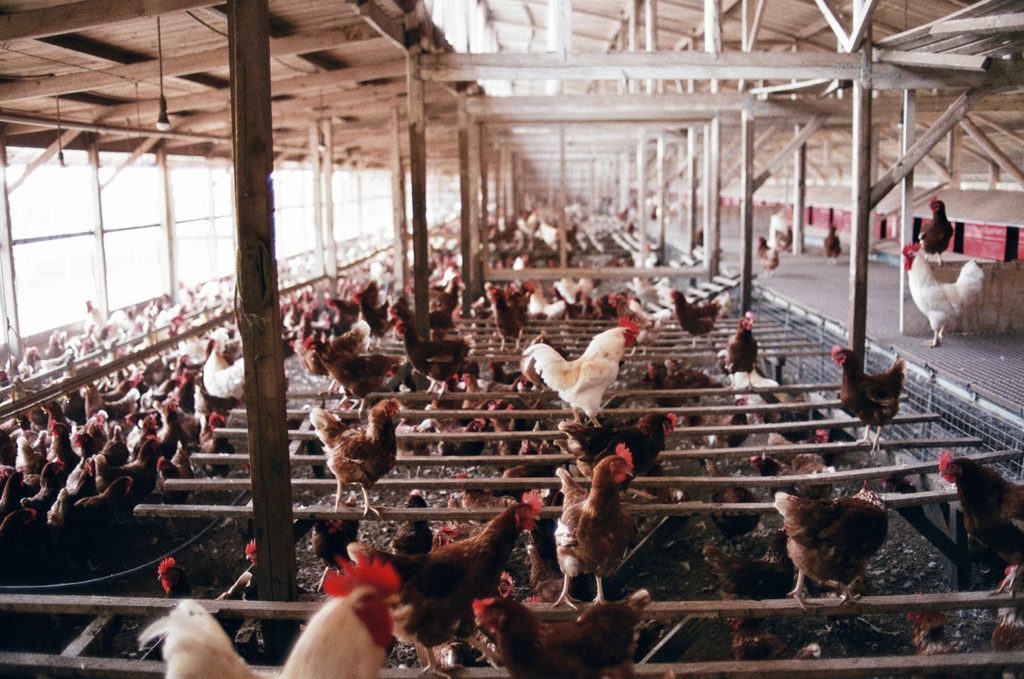
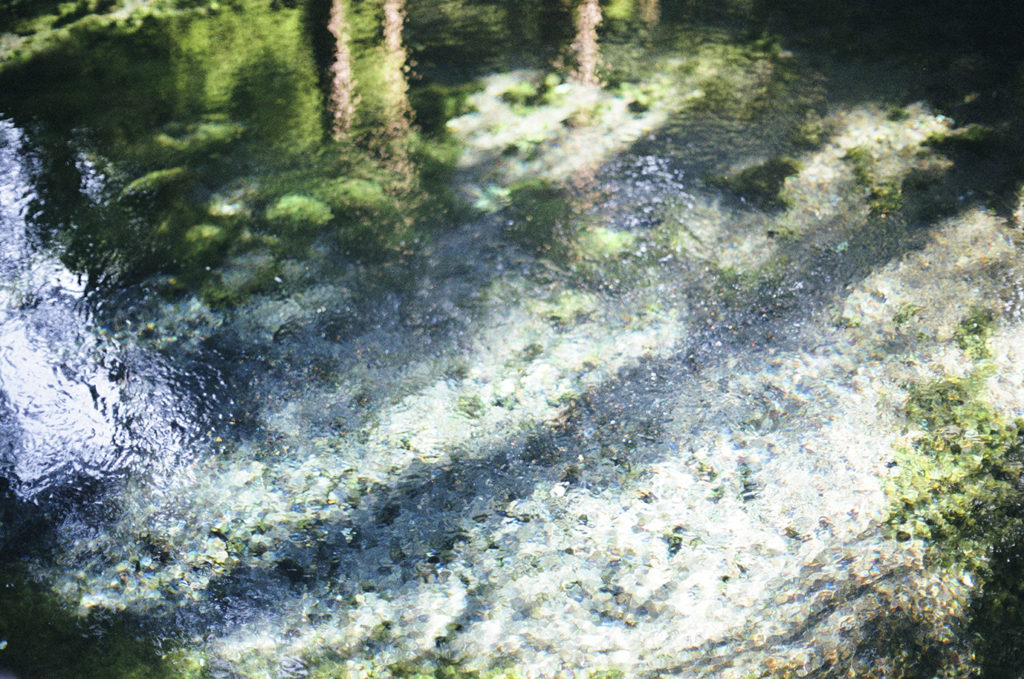
Having secured the main ingredient for our sandwich, we drove downhill and headed for central Aso City. Our next target was mustard to enhance the flavor of the Akaushi beef. Chika Sato at Aso Sato Farm is the inventor of Aso Takanard, an original mustard made with the seeds of takana (Japanese mustard green) using enzyme activation. Ms. Sato tried her hand at product development to sustain local farming and reclaim Aso’s traditional agricultural landscape.
“I used to be an ordinary office worker in Osaka, but the Great East Japan Earthquake of 2011 persuaded me to come back to my family’s home in Aso. As long as I was in Aso, the sensible thing to do was take up farming. I thought I could make up for the declining number of local farmers and help change the agricultural landscape. But when I actually tried my hand at farming, I felt I wasn’t skilled enough or physically strong enough to grow vegetables. This was how I ended up developing original products.”
Her idea was to revitalize farming in the community through activities that no one else had yet tried, and this was to develop new products using the local vegetables.
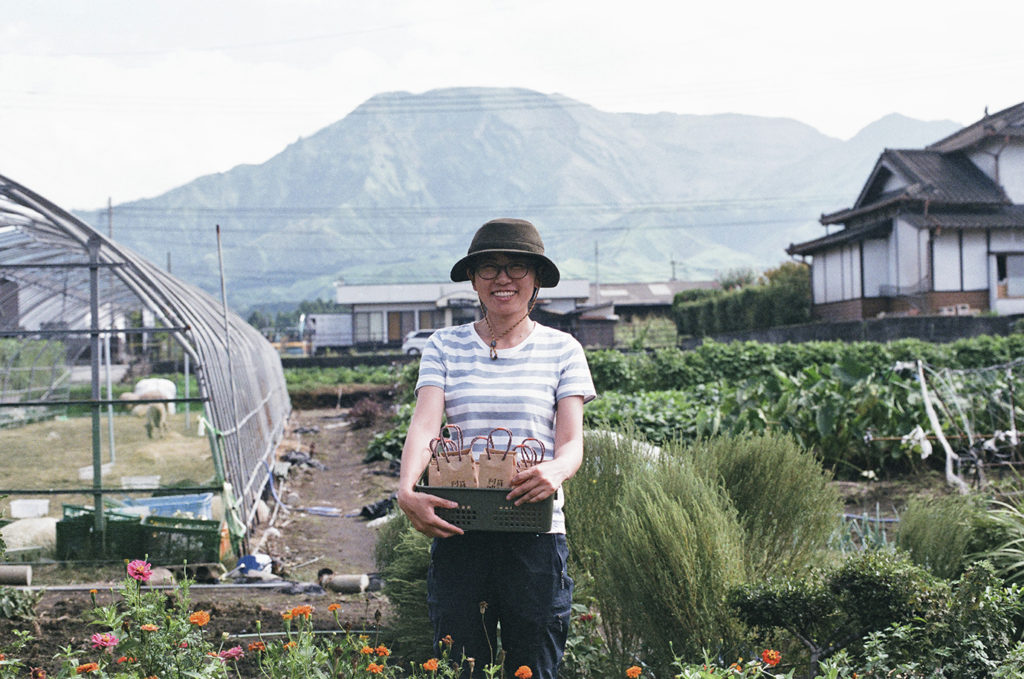
“While I was pondering over ways to flesh out my idea, I happened to watch a TV program on how to make mustard. I was inspired to try it using the local takana, and that started it all. Takana has a short harvest time of only three days a year. Because it isn’t very profitable, many farmers are giving it up. If I could put my Takanard on a path of success and buy larger volumes of takana seeds, the farmers could continue growing the vegetable. It would be amazing if I could create a cycle like that.”
The story behind Ms. Sato’s charming smile is creative, brims with love for her home city, and speaks of an epic vision. Curious to know what her Takanard tastes like—the product of her painstaking work—we tried a bit to taste. Strong, fresh, fragrant, and spicy. Now that we were aware of the magnitude of Ms. Sato’s efforts, the Takanard left a pungent tingle on our tongues.
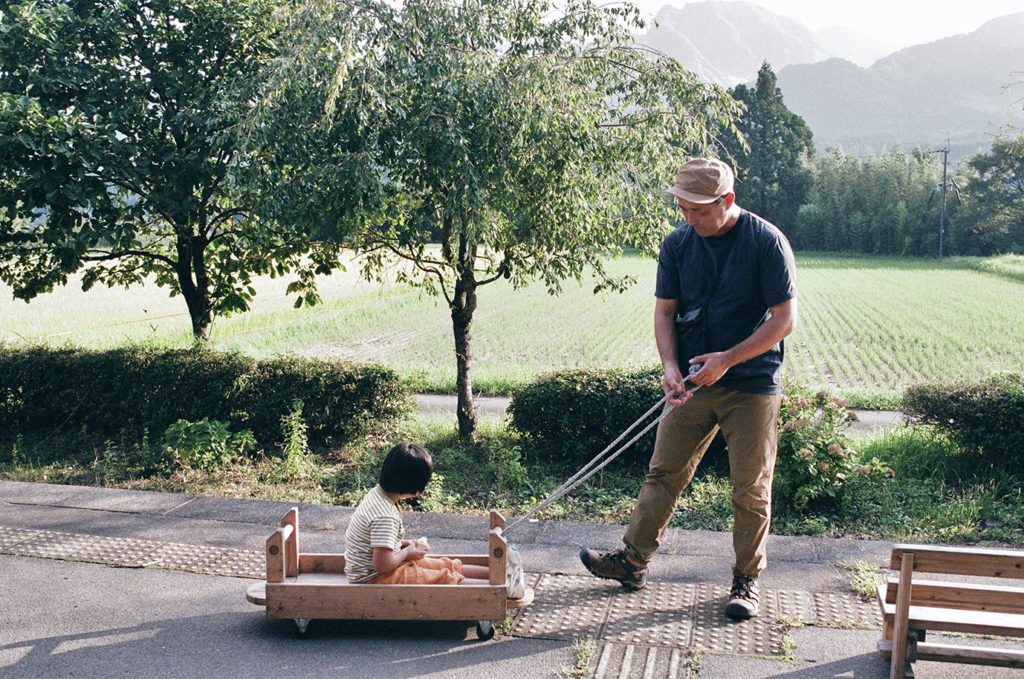
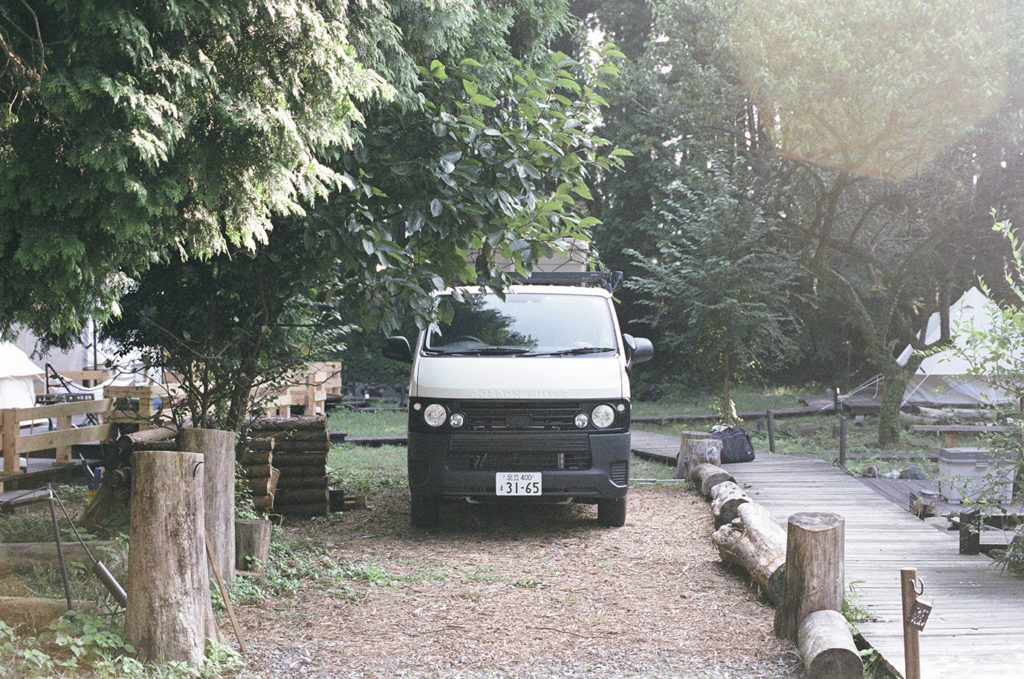
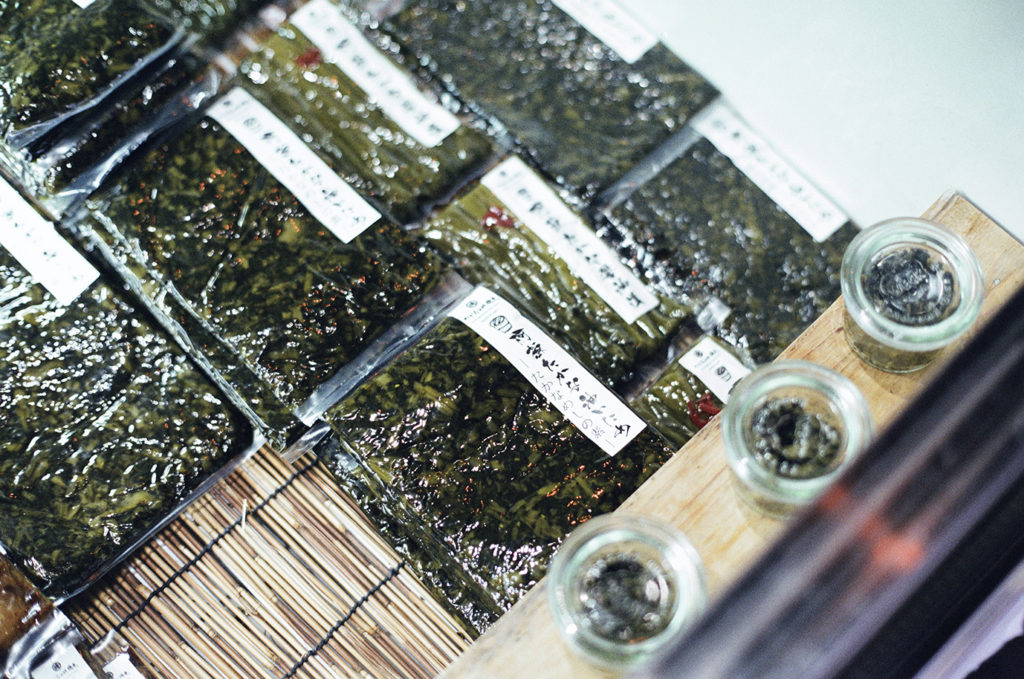
SPOT LIST
Greenfarm Kuju
4066-2 Kuju-machikuju, Taketa-shi, Oita
Cafe Karin
4581 Nakabaru, Aso-gun Minamioguni-machi, Kumamoto
Farmer’s Restaurant Aso Yamanosato
202 Tajiri, Aso-gun, Ubuyama-mura, Kumamoto
Tokumaru Tsukemono
2681-1 Kamishikimi, Aso-gun Takamori-machi, Kumamoto












